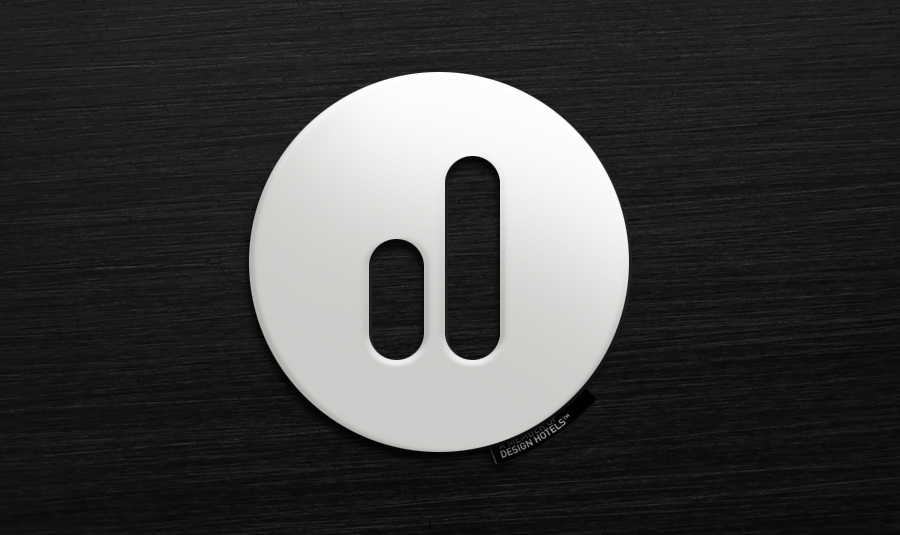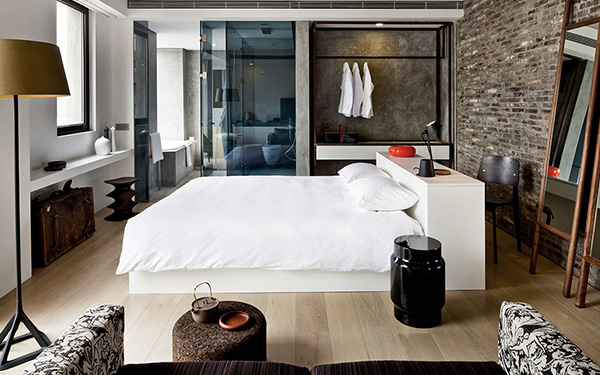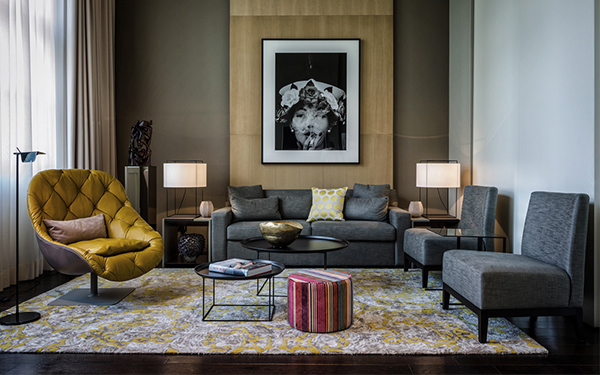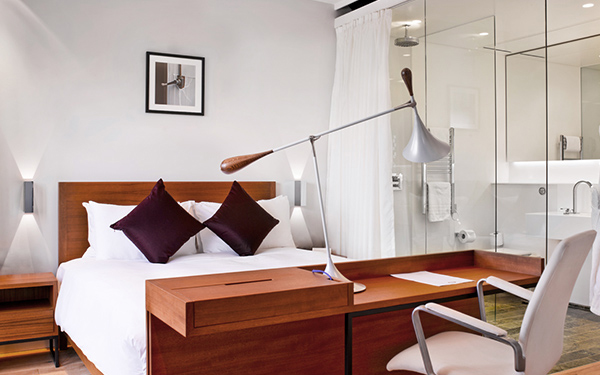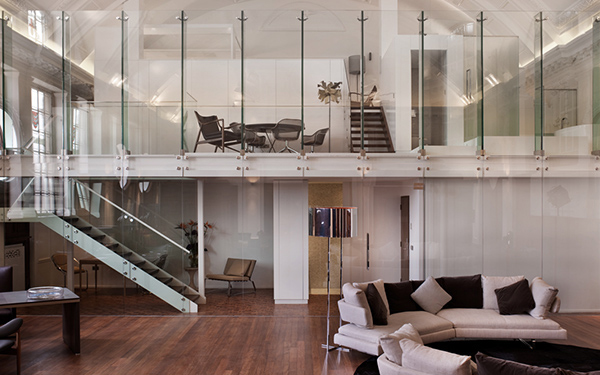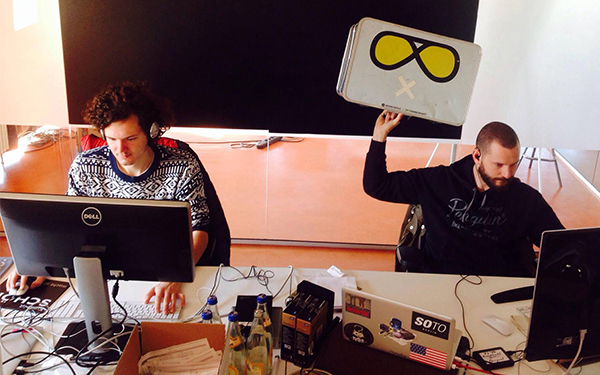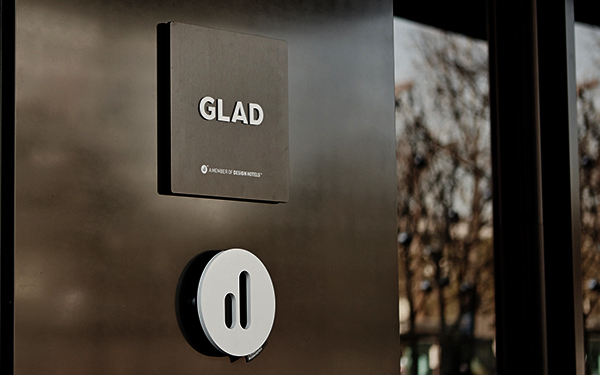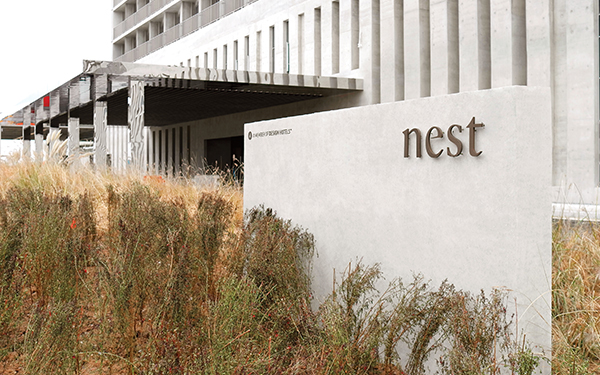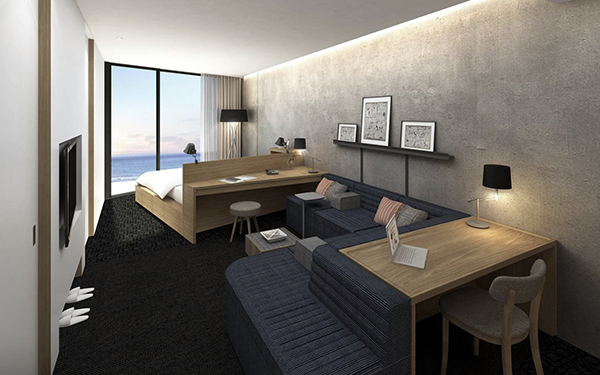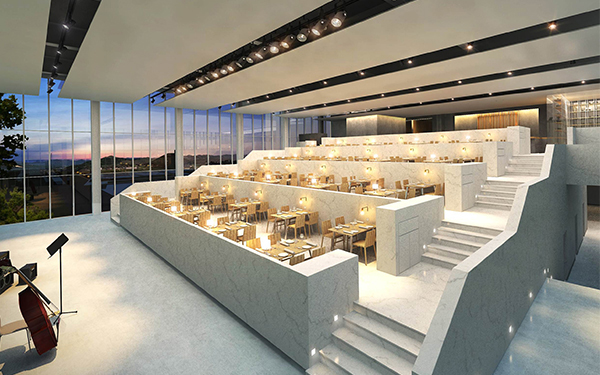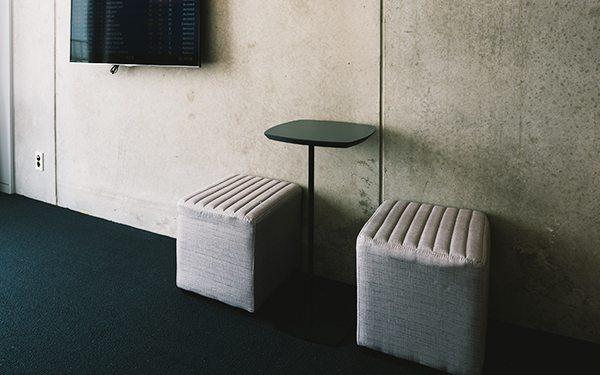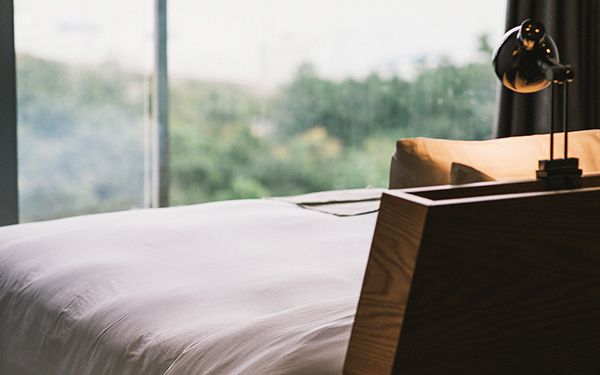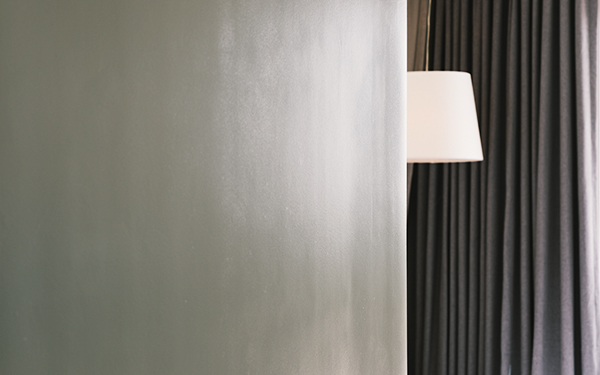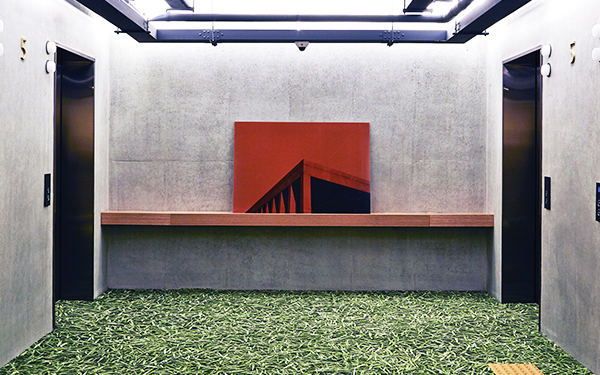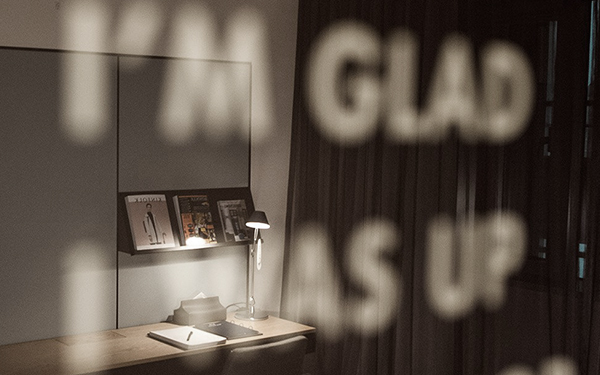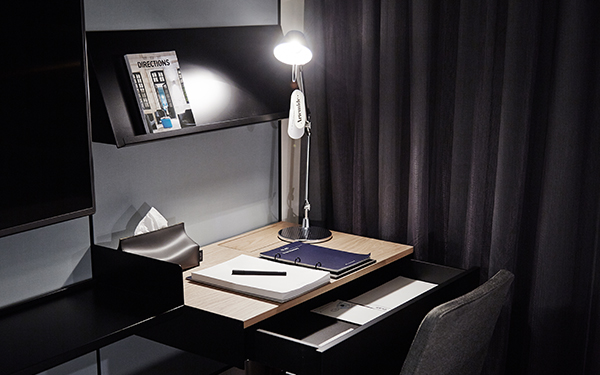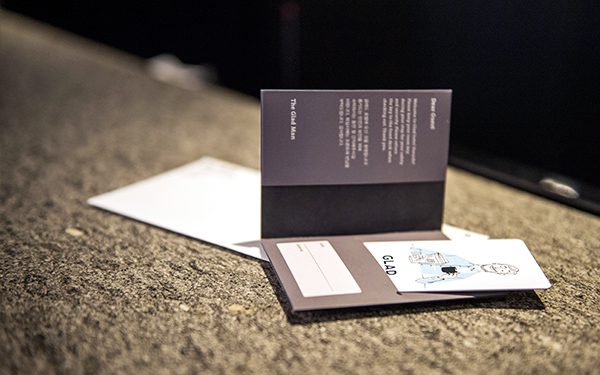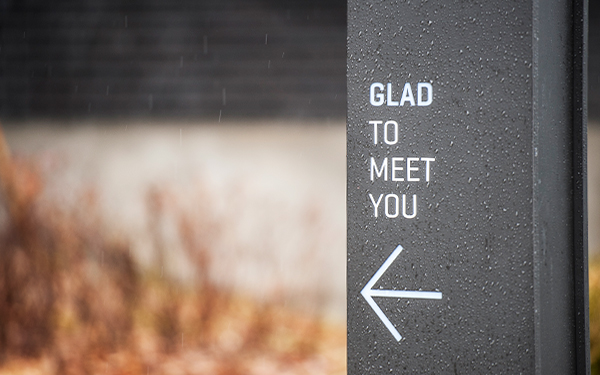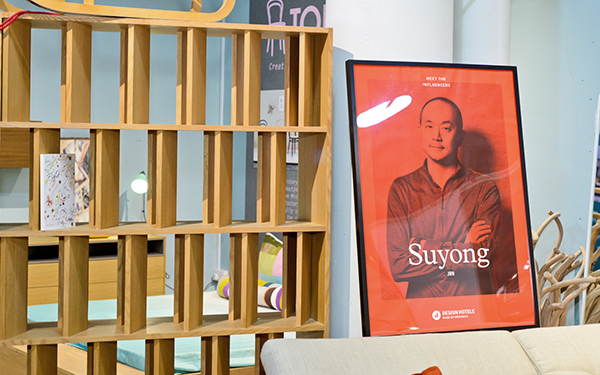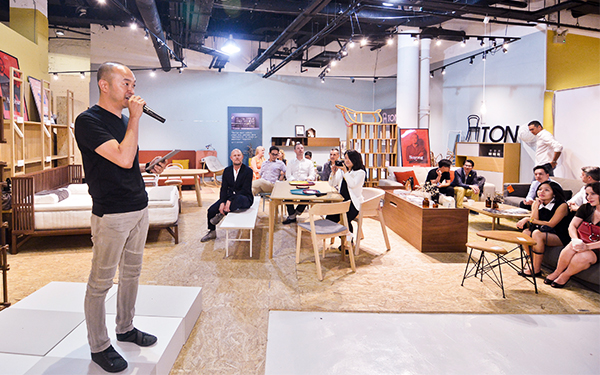‘Design Hotels’ is a global hotel platform that introduces design hotels across the globe hand-picked with its unique point of view, as well as providing the consulting and marketing services. More than 400 hotels apply for membership each year, but only an average of 5% of them are approved. Since its foundation in 1993, 280 hotels in 50 countries have been given the membership; Nest Hotel and Glad Hotel, designed by JOH, acquired the nation’s first and second membership of Design Hotels last year.
Although there are boutique hotels everywhere, the key criteria for Design Hotel membership doesn’t lay in the unique architecture and interior design of a space filled with fabulous furniture: they put a great stress on the persons behind the concept of the hotels. They call the creators of the concept as ‘originals.’ When they choose a member, they pay personal visits to understand the vision and attitude in the most important stages of decicion. That’s why the motto of Design Hotels is ‘Made by Originals.’
“It’s always a trifle detail that impresses us deeply. What makes a hotel special is a careful concern for its guests,” said Brandon Chan, the director of marketing for Asia. Last April, He visited Korea and said that the most important factors to become a member of Design Hotels is the enthusiasm and commitment of the person behind the concept of the hotel, and that these are the most important reasons they picked Nest Hotel and Glad Hotel as members.
- INTERVIEWEE
- Brandon Chan, the director of marketing for Asia
- INTERVIEWER
- JOH&Company
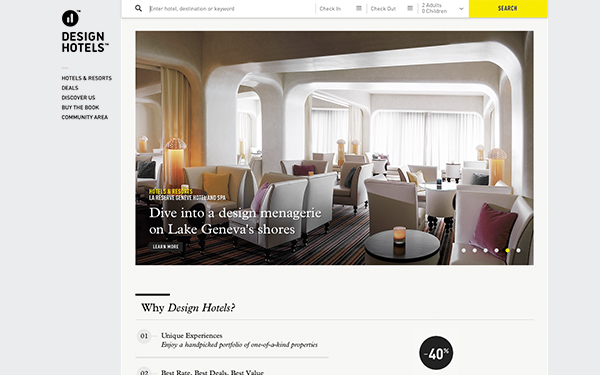
Tell us about the establishment of Design Hotels.
Almost 20 years ago, Claus Sendlinger, a founder and CEO of Design Hotels, began his exploration for individual hotels that are independent from big hotel chains. He wanted to find a unique experience of hotel that global hotel chains including Hilton or Hyatt can’t give. It was before the ‘design hotels’ even began to gain attention. He found some unique hotels during his journey and talked with the owners of hotels about the Design Hotels platform he had in mind. In 1993 he founded Design Hotels with 10 member hotels he picked by himself.
What makes a design hotel?
At Design Hotels, there are key areas that we consider as important. Of course, we look at the architecture and design. Yet, we try to find out whether the person behind the hotel has a creative vision. We refer to the persons who had conceived the overall concept for the hotels as ‘originals.’ An original can be an owner, architect, or a designer of the hotel. The enthusiasm and commitment of the original is the most important criterion to be a Design Hotels member. We also focus on the social responsibilities of the hotels; for example, we try to find out whether the hotel is active in protecting environments, or whether there are eco-friendly policies in the hotel.
Tell us about the selection process for the membership.
Soon after we receive an application from a hotel, our research team start a general investigation of the hotel, including the information on the owner, designer, and architect of the hotel. Then our business development team fly to the applicant hotel. We meet the potential ‘originals’ and learn about the concept of the hotel. In that stage, we examine the factors such as the architecture, interior design, heritage / history, the vision of the hotel owner, the responsibility for society, and the local integration. The stage is called a ‘Brand Fit’ where we find out if the applicant hotel fits the vision of Design Hotels and shares the same orientation. If the hotel successfully go beyond the Brand Fit stage, we start to discuss the detailed conditions for the contract. It takes 4-20 weeks to decide whether the hotel would be a part of Design Hotels.
How is the business development team organized?
We have business development teams in Berlin, Singapore, and New York, each group consists of plus-minus 6 people. They have different experiences in travelling or hospitality fields; some of them worked for airlines or tour companies, while there are people who have resumes as hoteliers in hotel chains or independent hotels. They share their views to make a right choice for the membership; if there’s a member hotel near the applicant hotel, they also listen to our member’s opinion for the applicant hotel. They try to collect objective information as many as possible.
We refer to the persons who had conceived the overall concept for the hotels as ‘originals.’ An original can be an owner, architect, or a designer of the hotel. The enthusiasm and commitment of the original is the most important criterion to be a Design Hotels member.
Who are the guests of Design Hotels member hotels?
A majority of people who love our member hotels are creative people working in creative industries such as fashion, advertising, media, design or architecture. Others are those who value design over other thing even if they are not working in creative fields. Recently, our customer base has been extended to include those who had already had enough of global hotel chains while travelling abroad many times; they began to appreciate the design hotels providing specific and distinctive experiences.
As the term ‘boutique hotel’ gained attention, we see hotels that feature elements of contemporary design. What differentiates the Design Hotels members from others?
Thanks to the enhanced standards of living, many people nowadays appreciate design as a part of their lifestyle. I like to call them ‘design wannabes.’ The hospitality industry has been well aware of design’s potential to attract more people. However, what Design Hotels regards as more important than the quality design is the quality experience provided by the hotel. Design is only a starting point: our aim is to create a link between the locality of the hotel and its visitors. We want our guests to take a walk outside the hotel and experience the local culture of that region.
Design Hotels has many partner companies such as AUDI and Illy caffe. Tell us about your collaboration with those partners.
The partnership is to enhance brand awareness or to attract new group of customers. We believe the customers of Audi share some common ground with us, in terms of the lifestyle. We want the customers of Audi to stay in a Design Hotels member hotel when they are travelling. If they haven’t heard of us, the partnership would be a fair chance to build the awareness. We start a partnership when we feel we have the similar brand value and lifestyle in common with the other company.
Design is only a starting point: our aim is to create a link between the locality of the hotel and its visitors. We want our guests to take a walk outside the hotel and experience the local culture of that region.
Last year, Nest Hotel and Glad Hotel acquired the nation’s first and second membership of Design Hotels.
When we met Suyong Joh and other members of the hotel project in the JOH office, we noticed that the company is involved deeply from every detailed aspect to the overall concept of the projects. Before long, we realized that we share the common value in mind, and were convinced that the membership will create a synergy for both of us. We were impressed by JOH’s attitude with potential partners like us as well as their way of dealing with two different hotel projects at the same time. JOH had the enthusiasm and commitment we’ve been looking for—thus, we decided to collaborate with them.
Frankly speaking, we also examined other hotels in Korea which applied for the membership around the same time. However, the elements of those hotels didn’t seem to form a consistent and coherent concept; for example, the fabulous designing of communal spaces suddenly lost its coherency as soon as we stepped inside the guestroom. Speaking of the case, the guestroom itself lacked the coherency due to the mismatching arrangement of the colors and material of furniture and other small items in the room. Brand, design, and ways of communication should be integrated in the holistic value.
Before the two hotels were completed, you had seen the rendered images of the hotel designs. What was your impression when you visited the hotels when they were completed?
The completed hotels were much better than the design itself. In fact, it was a rare case for Design Hotels to select new members before they were actually built. The trustworthy attitude of JOH dealing with the project made it possible for us to do so. After a long discussion and internal meetings, we concluded that “JOH know exactly what they are doing with the projects; they’re going to make statements through the two hotels.”
Can you please briefly evaluate our hotel projects?
Each hotel has presumes the specific kind of travelers who are likely to visit the place. Firstly, Glad Hotel, located in the office district of Yeouido, seem to target businesspeople and of course, other customers with a special concern for design elements. We had the impression that JOH had set a clear target of the customers, and arranged every element of the hotel, including the size of the lobby, guestrooms and hallways, according to the preference of its potential customers.
The customer base of Nest Hotel may be different, since the hotel is located near the airport. Many of its visitors will only stay for a short period of time before and after using the airport. Due to its seaside location, however, Nest Hotel successfully became a part of such a beautiful landscape. One of the most impressive details in Nest Hotel was Platz, the restaurant. The tier of seats allowed its guests to enjoy the picturesque scenery, regardless of where they are seated. We said to each other, “Wow, they gave such a careful consideration for the customers’ experience related to the location of hotel.” The other detail that drew our eyes was the arrangement of the furniture in deluxe rooms: Guests can enjoy the seaside view even when they are still in the bed or taking a hot bath; the bed is turned to face the window, and the bathtub, too, is placed beside a window open to the beautiful scenery outside. The small lounge area made between the bed and the table made us feel as if we’re taken care of. These were the result of the architect and designer’s great deliberation to enrich the customer experience.
Even though the Design Hotels team travels a lot and stays in numerous hotels, what impress us the most is always the trifle detail. What makes a hotel special is the careful consideration for its customers that makes them say “Look, the hotel has such a careful consideration even if it’s about the smallest parts of the hotel.” And the customers of the Design Hotels will feel the same way; based on their prior experiences in many other hotels, they don’t miss the detailed aspect and recognize its value.

Only 8% of Design Hotels member are hotels located in Asia. As a director of marketing, how do you define the potential of Asian market?
Only 48 membership hotels are located in Asia. Most of all, we have to consider the fact the Design Hotels began in Germany and established its roots in Europe. In my opinion, a mature market for design had been established in Europe long time ago. For example, design is already a part of lifestyle in Nordic countries, providing room for creation of groundbreaking designs in everyday life. Interestingly, similar phenomenon is happening in Asia; the lifestyle that appreciates the value of design is prevalent especially in countries with rapid economic growth including Korea, Taiwan, Japan, Hong Kong and Singapore.
After 22 years since its foundation, what influence did the Design Hotels exert in the field of hospitality business?
We believe that our strict criteria for membership has played a certain role in the field. It can be said that we have served to make people think of design as a part of their lifestyle. Apart from what we’ve done in the hospitality fiend, we’ve created a kind of design community consist of people all over the world who share the similar kind of lifestyle with us.
Design Hotels publishes yearbooks and directories every year. Is there any special reason to value the published books?
Although books are regarded as relics from old age in this contemporary world of digital media, we still believe that the publications are one of the most powerful way to express design. The image, text and message contained in a book are closely related to tell a story of a brand. A book is the result of our enthusiasm; we wish this enthusiasm is communicated to the readers and the existing and potential customers in a form of a book. Of course, you can get access to a variety of information sources through internet. However, we place our publications in hotel rooms so that the guests can flip through the pages and learn a little bit more about the Design Hotels brand. You can bring them home if you like; we’re willing to place another copy in the room.
The 20th anniversary yearbook of Design Hotels is a piece of art in itself. Even though we can’t publish them every year due to the pretty high production cost, it contains a ‘design statement’ of Design Hotels which we wish to communicate to our customers. That means the yearbook is not only a portfolio featuring member hotels; but also a visual representation of the brand value of Design Hotels.
Books published by Design Hotels are popular as props for TV series episodes or photo shoots.
Interesting. Our coffee table book and 20th anniversary editions are actually made to furnish our member hotels. Since we had inquiries for purchasing them, our books are being sold in design shops in Tokyo, Taipei, London, New York, and Sydney. It’s like our business areas are extended unintendedly.
Lastly, what are the values that hotels in our age should cherish?
As the hospitality business continues to mature, the values for next generation should be reflected in the hotels. More and more people look for hotels that shares the same values with them. For one thing, even the bath amenities are value-laden; travelers nowadays will wonder if the shampoos, conditioner, shower gels and lotions are made of natural or chemical ingredients. Visitors of our restaurants will inquire about the origin of meat and vegetables served by us. We can’t make a compromise with these issues that might affect the quality of service. The voice of travelers will become increasingly influential to the hotels in foreseeable future.

